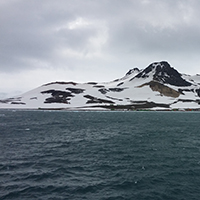Ciliates in different types of pools in temperate, tropical, and polar climate zones – implications for climate change

Submitted: 29 November 2020
Accepted: 7 September 2021
Published: 28 September 2021
Accepted: 7 September 2021
Abstract Views: 2360
PDF: 337
HTML: 126
HTML: 126
Publisher's note
All claims expressed in this article are solely those of the authors and do not necessarily represent those of their affiliated organizations, or those of the publisher, the editors and the reviewers. Any product that may be evaluated in this article or claim that may be made by its manufacturer is not guaranteed or endorsed by the publisher.
All claims expressed in this article are solely those of the authors and do not necessarily represent those of their affiliated organizations, or those of the publisher, the editors and the reviewers. Any product that may be evaluated in this article or claim that may be made by its manufacturer is not guaranteed or endorsed by the publisher.
Similar Articles
- Anton Brancelj, Uroš Žibrat, Brigita Jamnik, Differences between groundwater fauna in shallow and in deep intergranular aquifers as an indication of different characteristics of habitats and hydraulic connections , Journal of Limnology: Vol. 75 No. 2 (2016)
- Lei Zeng, Biyun Liu, Zhigang Dai, Qiaohong Zhou, Lingwei Kong, Yi Zhang, Feng He, Zhenbin Wu, Analyzing the effects of four submerged macrophytes with two contrasting architectures on zooplankton: A mesocosm experiment , Journal of Limnology: Vol. 76 No. 3 (2017)
- Amaia Pérez-Bilbao, Cesar João Benetti, Josefina Garrido, Aquatic Coleoptera assemblages in protected wetlands of North-western Spain , Journal of Limnology: Vol. 73 No. 1 (2014)
- Mattia M. Azzella, Italian Volcanic lakes: a diversity hotspot and refuge for European charophytes , Journal of Limnology: Vol. 73 No. 3 (2014)
- Anna VISCONTI, Marina MANCA, Riccardo DE BERNARDI, Eutrophication-like response to climate warming: an analysis of Lago Maggiore (N. Italy) zooplankton in contrasting years , Journal of Limnology: Vol. 67 No. 2 (2008)
- Fernando W. Bernal-Brooks, José J. Sánchez Chávez, Luis Bravo Inclán, Rubén Hernández Morales, Ana K. Martínez Cano, Owen T. Lind, Laura Dávalos-Lind, The algal growth-limiting nutrient of lakes located at Mexico’s Mesa Central , Journal of Limnology: Vol. 75 No. s1 (2016): Proceedings of the 6th National Congress of Limnology
- Juan Manuel MEDINA-SÁNCHEZ, Manuel VILLAR-ARGAIZ, Pedro SÁNCHEZ-CASTILLO, Luis CRUZ-PIZARRO, Presentación CARRILLO, Structure changes in a planktonic food web: biotic and abiotic controls , Journal of Limnology: Vol. 58 No. 2 (1999)
- Sameer M. Padhye, Henri J. Dumont, Species richness of Cladocera (Crustacea: Branchiopoda) in the Western Ghats of Maharashtra and Goa (India), with biogeographical comments , Journal of Limnology: Vol. 74 No. 1 (2015)
- Ruben Ladrera, Miguel Cañedo-Argüelles, Narcís Prat, Impact of potash mining in streams: the Llobregat basin (northeast Spain) as a case study , Journal of Limnology: Vol. 76 No. 2 (2017)
- Michele Cesari, Roberto Guidetti, Lorena Rebecchi, Ilaria Giovannini, Roberto Bertolani, A DNA barcoding approach in the study of tardigrades , Journal of Limnology: Vol. 72 No. s1 (2013): 12th International Symposium on Tardigrada
<< < 38 39 40 41 42 43 44 45 46 47 > >>
You may also start an advanced similarity search for this article.

 https://doi.org/10.4081/jlimnol.2021.1997
https://doi.org/10.4081/jlimnol.2021.1997





